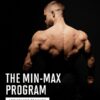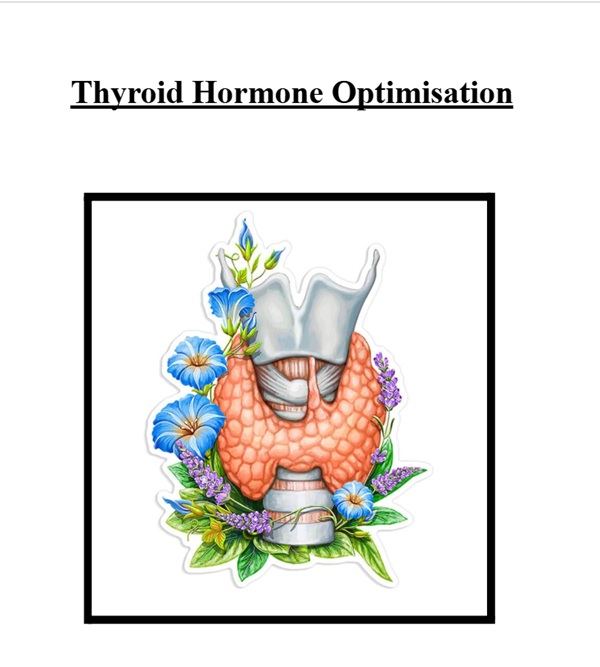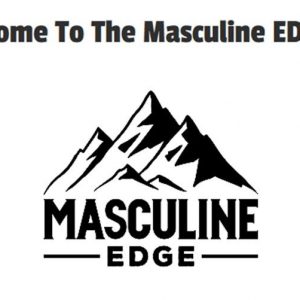No products in the cart.
[GroupBuy] Thyroid Hormone Optimization – Moosa
$99.00 $39.00
- Payment method: I will send the payment link to your email.
- Deliver by: Google Drive, Mega.nz
Category: Health & Fitness
This document delves into the profound potential of Thyroid Hormone Optimization as presented in a comprehensive digital guide, offering a deep dive into its methodologies, target audience, and the author’s compelling narrative for achieving enhanced aesthetic and health benefits.
Table of Contents
Thyroid Hormone Optimization
The comprehensive analysis of the Thyroid Hormone Optimization guide reveals a meticulously structured approach to maximizing T3 hormone production, promising significant weight loss and an improved physical appearance. This guide strategically positions itself as a definitive, no-nonsense blueprint, designed to cut through the pervasive noise of ineffective, generalized health advice that often leaves individuals frustrated and without tangible results. The methodology underpinning this guide is deeply rooted in the author’s compelling personal journey of overcoming a severe period of poor health, a struggle directly attributed to profound hormonal and thyroid imbalances. This personal narrative not only lends significant credibility to the guide’s claims but also establishes a relatable foundation for its target audience.
The guide’s architecture is thoughtfully segmented into five distinct modules, each meticulously addressing critical facets of health and well-being: diet, lifestyle, supplements, and a specialized protocol for Hashimoto’s disease. This holistic approach ensures that all major contributing factors to thyroid health are systematically addressed. The marketing and sales strategy employed for this product is keenly focused on individuals who have grown disillusioned with the lack of progress achieved through mainstream health gurus and are, crucially, prepared to commit wholeheartedly to substantial lifestyle transformations. The inclusion of a strict no-refund policy serves as a powerful testament to the author’s unwavering emphasis on personal responsibility and unwavering commitment from the buyer, reinforcing the idea that success hinges on active participation rather than passive consumption.
The central promise of this guide is to deliver a complete system engineered for maximizing thyroid hormone (T3) production, with the explicit outcomes being significant weight loss and the attainment of a more attractive physical appearance. The program is not merely presented as a collection of tips but as a meticulously derived solution, born directly from the author’s own arduous journey and subsequent triumph over health adversity. This personalized origin story is a cornerstone of the guide’s appeal, offering hope and a proven path to those who feel they have exhausted conventional options. The guide’s content is thus framed as the direct, tangible result of intensive personal research and rigorous self-experimentation, making it a unique and compelling offering in the crowded health and wellness market.
Core Premise and Author’s Narrative
The foundation of the Thyroid Hormone Optimization guide rests firmly on its core premise: providing a complete and actionable system for maximizing T3 production, thereby unlocking significant weight loss and a more attractive physical appearance. This isn’t just a theoretical framework; it’s presented as the distilled wisdom derived from the author’s own profound experience. The narrative arc of the author’s personal story is central to the guide’s credibility and emotional resonance. The author vividly recounts navigating one of the darkest periods of their life, a time characterized by a complete breakdown in health and well-being.
This era was marked by deeply destructive habits, including prolonged periods of sleeping in, a diet rich in junk food, and hours lost in the escapism of TikTok and video games like FIFA. This pattern cultivated a state of low energy and profound lack of motivation, described as a “drip-fed dopamine sedation” that effectively sabotaged any pursuit of meaningful goals, manifesting even in minimal effort towards online classes. The physical and mental consequences of this lifestyle were severe, encompassing significant hormonal and thyroid dysfunction, worsening hair loss, and a complete erosion of trust in medical professionals and others.
This personal descent, however, became the crucible for the guide’s creation. The author attributes a potent “survival instinct” coupled with a “mathematician mindset” as the catalysts for a rigorous and exhaustive study of every conceivable theory related to health and well-being. This intense research journey ultimately converged on a singular conclusion: the fundamental root of their myriad problems lay in poor thyroid function and pervasive hormonal imbalance.
The guide, therefore, is not merely a product of academic research but a testament to profound personal transformation, a direct consequence of this meticulous self-study and experimentation. This narrative thread weaves through the entire guide, offering a relatable and inspiring backstory that positions the author not just as an instructor, but as a fellow traveler who has successfully navigated the same treacherous terrain.
The emphasis on the author’s “mathematician mindset” suggests a logical, data-driven approach to problem-solving, which is then translated into the structured, systematic methodology presented in the Thyroid Hormone Optimization guide. This blend of personal struggle and methodical inquiry is designed to resonate deeply with individuals who feel similarly lost and overwhelmed by their own health challenges, promising them not just information, but a proven path forged through direct experience.
Critique of the Current Health and Wellness Landscape
The Thyroid Hormone Optimization guide positions itself as a powerful antidote to what it describes as a flawed, confusing, and often misleading landscape within the health and wellness industry, particularly concerning Thyroid Hormone Optimization. The author argues that a significant number of individuals consistently fail to achieve desired results not due to a lack of effort, but because they are trapped in a perpetual cycle of misinformation and ineffective, generalized strategies. This environment is characterized as a “circus of gimmicks,” where people are inundated with contradictory advice – “eat these 5 super veggies, 3 of these nuts and 10 of these supplements” – none of which, according to the guide, genuinely contribute to meaningful progress.
The critique extends to mainstream advice, which, while seemingly benign, is deemed “too simplistic and ineffective” for those experiencing stalled progress and persistent symptoms. Recommendations such as “optimize sleep, avoid EMF, walk more, and ‘just do more’” are dismissed as insufficient for individuals facing complex hormonal and thyroid imbalances. The guide asserts that these common suggestions, while not inherently bad, lack the specificity and depth required to address the root causes of chronic health issues.
The author identifies two critical psychological states that actively impede progress: uncertainty and overconfidence. Uncertainty, stemming from an overwhelming deluge of information, leads to individuals engaging in too many irrelevant activities, resulting in either stagnation or even regression in their health journey. This state of informational paralysis prevents focused and effective action. Conversely, overconfidence in a particular strategy, even if flawed, can render individuals blind to the crucial signals their own bodies are sending, preventing necessary adjustments or course corrections.
The Thyroid Hormone Optimization guide staunchly advocates for an approach grounded not in subjective belief, but in the implementation of strategies that have been empirically validated and demonstrably effective, particularly through blood test results in others. This emphasis on objective evidence and proven outcomes is a cornerstone of the guide’s methodology, aiming to provide a clear, actionable path forward for those who have been let down by conventional wisdom. By dissecting the inadequacies of the existing health and wellness paradigm, the guide effectively carves out a niche for itself as a beacon of clarity and efficacy, promising a data-driven journey toward genuine Thyroid Hormone Optimization.
Structure and Content of the Guide
The T3 Optimisation guide meticulously structures its methodology across five distinct modules, each designed to address a critical pillar of Thyroid Hormone Optimization. This modular approach ensures a comprehensive and systematic understanding and implementation of the author’s principles. Module 1, “Introduction & Getting Started,” lays the foundational groundwork by providing essential background information on the thyroid gland.
It delves into clear explanations of key hormones such as T3, Estrogen, and Cortisol, demystifying their roles and interconnections within the body. Crucially, this module directly tackles a common frustration experienced by many: “Why do I still have thyroid symptoms when my lab tests are normal?” This immediate addressing of a widespread concern helps establish credibility and relevance with the target audience. Module 2, “Diet,” forms the cornerstone of the nutritional aspect of Thyroid Hormone Optimization.
It outlines precise macronutrient guidelines and calorie consumption targets, moving beyond vague recommendations to offer actionable dietary frameworks. A definitive list of foods to completely avoid is provided, alongside a list of foods to prioritize, offering clear boundaries and choices. The module also emphasizes the mastery of mineral and vitamin intake, recognizing their pivotal role in thyroid function, and explores strategic meal timing. Finally, it includes vital information on cholesterol, highlighting its often misunderstood connection to hormonal health.
Module 3, “Lifestyle,” extends the focus beyond diet to encompass broader daily habits influencing Thyroid Hormone Optimization. This section underscores the paramount importance of sleep, providing protocols to optimize its quality and duration. It details specific exercise protocols, moving beyond generic advice to suggest activity types and intensities beneficial for thyroid health. The role of sunlight is explored, acknowledging its impact on circadian rhythms and vitamin D synthesis, both crucial for hormonal balance.
A critical warning about specific endocrine disruptors is included, educating users on environmental factors that can undermine thyroid function. The module culminates in a practical daily routine example, offering a template for integrating these lifestyle changes seamlessly. Module 4, “Supplements,” delves into the strategic use of nutritional aids for Thyroid Hormone Optimization. It provides a carefully curated list of T3-boosting herbs and supplements, offering specific recommendations rather than broad categories. This module also features a detailed Liver Support Protocol, recognizing the liver’s crucial role in hormone conversion and detoxification, and a specific Gut Balance Protocol, acknowledging the profound connection between gut health and overall hormonal regulation.
Finally, Module 5, “Hashimoto’s Protocol,” offers a specialized segment for individuals dealing with this specific autoimmune condition. It provides essential background information on Hashimoto’s thyroiditis, outlines a list of necessary tests to identify contributing factors, and, most importantly, details specific strategies designed to effectively lower thyroid antibodies. This specialized module underscores the guide’s comprehensive nature, addressing both general Thyroid Hormone Optimization and specific autoimmune challenges like Hashimoto’s.
Moosa
The perspective offered by Moosa within this guide is not merely that of an author, but of a survivor and a meticulous investigator. His journey from the depths of poor health, characterized by destructive habits and profound physical and mental decline, to becoming a proponent of Thyroid Hormone Optimization is central to the product’s narrative. Moosa’s “mathematician mindset” is repeatedly highlighted as a key differentiator, suggesting a rigorous, analytical approach to health problems that contrasts sharply with the often anecdotal or generalized advice prevalent in the wellness industry.
This mindset allowed him to dissect and analyze countless theories, ultimately converging on the critical role of thyroid function and hormonal balance. The guide, therefore, is presented as the culmination of this intense personal research and self-experimentation, a “no-nonsense blueprint” that is validated by personal success and, implicitly, by the successful blood test results of others who have followed his protocol. This emphasis on Moosa‘s personal transformation and his systematic approach is designed to inspire trust and demonstrate the practical efficacy of the guide’s principles.
He doesn’t just offer advice; he offers a tested framework born from his own lived experience, positioning himself as a credible authority who has walked the talk. His critique of the “circus of gimmicks” and “insufficient mainstream advice” further solidifies his position as someone who has navigated the pitfalls of conventional wisdom and emerged with a truly effective solution for Thyroid Hormone Optimization. The strict no-refund policy, while perhaps controversial, reinforces his belief system in personal responsibility and commitment, echoing his own journey of unwavering dedication to finding a solution. This approach aligns with his vision of attracting individuals who are ready for significant lifestyle changes and are frustrated with superficial promises.
Target Audience Profile
The Moosa guide on Thyroid Hormone Optimization meticulously defines its ideal and non-ideal customers, emphasizing a specific mindset and clear health goals. This precise targeting ensures that the product reaches individuals who are most likely to benefit and commit to its rigorous methodology. An ideal candidate for this guide is someone who is utterly “sick and tired of shedding hair,” a common and distressing symptom of thyroid dysfunction, indicating a deep-seated frustration with their current health state. They are individuals who aspire to achieve a “sharper face with more defined facial bones (jaw, cheekbones etc) naturally,” suggesting a desire for aesthetic improvement without invasive procedures, aligning with the guide’s promise of physical transformation through Thyroid Hormone Optimization.
Crucially, the ideal buyer “understands that the guide is a tool that requires active implementation,” signifying a readiness for effort and engagement, not just passive consumption of information. Furthermore, this individual is “willing to completely change their diet and pre-existing beliefs about nutrition,” highlighting a flexible mindset open to radical shifts in their understanding and practice of health. Finally, an ideal customer is someone who “wants to take preventative action against the risk of age-related hypothyroidism,” demonstrating a proactive and long-term commitment to health and well-being.
Conversely, the guide explicitly delineates who is a poor fit, effectively filtering out those unlikely to succeed or whose expectations are misaligned. This includes anyone “not committed to following a guide to achieve results,” underscoring the necessity of adherence to the protocol. Individuals who “prefer to figure things out on their own” are also deemed unsuitable, as the guide offers a structured system rather than a collection of loose suggestions.
A significant exclusion is anyone who “has undergone a thyroid removal surgery,” as the guide’s focus on natural T3 production would be largely irrelevant for them. The guide also cautions against those who “mistakenly equate buying a product with achieving success,” reinforcing the message that the purchase is merely the first step in a journey requiring personal effort. Lastly, those “seeking a magic pill or quick fix” are clearly identified as a poor fit, as the guide demands significant lifestyle changes and commitment, aligning with Moosa‘s emphasis on deep, sustainable transformation through comprehensive Thyroid Hormone Optimization. This clear segmentation ensures that the guide attracts individuals who are genuinely prepared for the transformative journey it offers.
Personal Responsibility and Commitment
The philosophy underpinning Moosa‘s guide on Thyroid Hormone Optimization deeply intertwines with the principles of personal responsibility and unwavering commitment from the buyer. This emphasis isn’t merely a marketing tactic; it’s a foundational belief system that permeates the entire product, from its content to its sales strategy. The strict no-refund policy is a bold and unconventional move in the digital product space, but it serves a deliberate purpose: to underscore the author’s conviction that successful Thyroid Hormone Optimization is contingent upon the buyer’s dedication. It acts as a filter, ensuring that only those who are genuinely ready to invest their time, effort, and belief in the process will commit to the purchase. This policy sends a clear message: this is not a casual browse, but a serious commitment to a transformative journey, echoing Moosa‘s personal experience of dedicating himself entirely to finding a solution. It forces potential buyers to confront their readiness for significant lifestyle changes upfront, aligning their expectations with the demands of the program.
This focus on commitment is further reinforced by the explicit targeting of individuals who are “willing to completely change their diet and pre-existing beliefs about nutrition.” Moosa understands that ingrained habits and long-held beliefs can be significant barriers to progress, and his guide demands a willingness to dismantle these for true Thyroid Hormone Optimization. The guide is positioned as a “tool that requires active implementation,” not a passive information dump. This language consistently reminds the user that their success is directly proportional to their engagement and effort.
By clearly outlining who is a “poor fit” – those not committed, preferring to figure things out alone, or seeking a magic pill – Moosa sets boundaries and manages expectations. He is not selling a quick fix, but a blueprint for a profound lifestyle overhaul that, when diligently followed, can lead to remarkable results. This approach cultivates a community of serious, dedicated individuals who are ready to take full ownership of their health journey, reflecting the intensity and determination that characterized Moosa‘s own path to Thyroid Hormone Optimization. The guide becomes a partnership between the author’s proven methods and the user’s unwavering commitment.
Why this Guide Resonates
The Thyroid Hormone Optimization guide, specifically crafted by Moosa, resonates deeply with a particular segment of the health-conscious population primarily because it addresses profound levels of frustration and disillusionment that many experience with mainstream health advice. Moosa‘s personal narrative is a powerful magnet, drawing in individuals who feel equally “at the bottom of the barrel” concerning their health, having tried numerous conventional and alternative approaches without success. The story of overcoming “destructive habits,” “low energy and motivation,” and “physical and mental decline” due to hormonal and thyroid imbalances creates an instant connection.
People who are “sick and tired of shedding hair” or witnessing a decline in their physical appearance—such as desiring “a sharper face with more defined facial bones”—find a voice in Moosa that acknowledges their specific, often unspoken, concerns. This guide doesn’t just offer an abstract solution; it offers a lifeline from someone who has lived through the very struggles it aims to resolve. The “mathematician mindset” that Moosa attributes to his breakthrough appeals to those who are weary of anecdotal evidence and yearn for a more systematic, logical, and data-driven approach to their health problems.
Furthermore, the guide’s sharp critique of the “circus of gimmicks” and “insufficient mainstream advice” validates the reader’s own experiences of frustration with conflicting information and ineffective recommendations. This validation is crucial; it tells the reader that their instincts about the inadequacy of generalized advice were correct. By explicitly identifying “uncertainty” and “overconfidence” as barriers to progress, Moosa demonstrates a keen understanding of the psychological hurdles that prevent individuals from achieving Thyroid Hormone Optimization.
This intellectual empathy, combined with the promise of strategies “validated by blood tests in others,” establishes a strong sense of trust and efficacy. The comprehensive modular structure, covering diet, lifestyle, supplements, and even a specific Hashimoto’s protocol, promises a holistic solution that leaves no stone unturned, appealing to those who demand a thorough and complete system. Ultimately, the guide resonates because it speaks directly to the core desires for tangible results, a clear path forward, and a sense of hope, all delivered by an author who has personally navigated the very challenges he now helps others overcome in their quest for optimal Thyroid Hormone Optimization.
Conclusion
The Thyroid Hormone Optimization guide, spearheaded by Moosa, stands as a meticulously crafted blueprint aimed at individuals deeply frustrated with conventional health advice and ready for profound lifestyle changes. Rooted in Moosa’s personal triumph over severe hormonal imbalances, the guide offers a systematic, five-module approach covering diet, lifestyle, supplements, and a specialized Hashimoto’s protocol. It critiques the prevailing health landscape as rife with misinformation, positioning itself as a no-nonsense, evidence-based solution for maximizing T3 production, leading to significant weight loss and enhanced physical appearance. The guide explicitly targets committed individuals seeking genuine transformation, emphasizing personal responsibility and active implementation, underscored by a strict no-refund policy, ensuring that only those truly dedicated to the journey of Thyroid Hormone Optimization embark on it.
Sales Page:_https://questmoosa.gumroad.com/l/hevrs
Delivery time: 12 -24hrs after paid
Be the first to review “[GroupBuy] Thyroid Hormone Optimization – Moosa” Cancel reply
Related products
Health & Fitness
$0.00
Health & Fitness
$19.50
Sale!
Health & Fitness
Health & Fitness
$45.00
Sale!
Health & Fitness
$34.50
Sale!
Health & Fitness
Sale!
Health & Fitness











Reviews
There are no reviews yet.